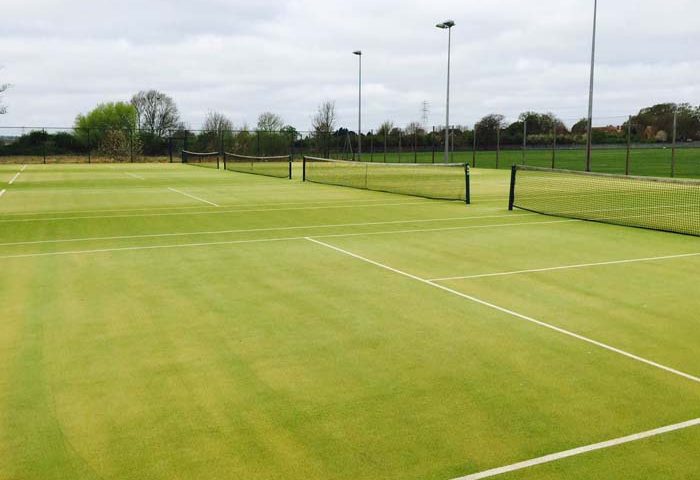Guide to artificial sports surface problems?
Artificial sports surfaces can encounter various problems over time due to factors such as heavy use, weather conditions, maintenance practices, and the quality of the initial installation. Addressing these problems promptly is essential to maintain the surface’s safety, performance, and longevity.
Here are some common issues associated with artificial sports surfaces:
Wear and Tear:
Constant use can lead to high wear areas, causing the turf fibres to become flattened and compacted. This can affect the surface’s playability and aesthetics.
Compaction:
Over time, the infill material can become compacted, reducing drainage capacity and impacting shock absorption. Compacted infill can make the surface harder and less comfortable for players.
Infill Migration:
Infill material may migrate to the edges of the playing area, creating uneven infill distribution and leading to bare spots in some areas.
Balding and Thinning:
Intense use or improper maintenance can cause the turf fibres to thin out or become bald in certain areas, affecting the surface’s appearance and performance.
Infill Contamination:
Dust, dirt, debris, and organic matter can accumulate within the infill, affecting drainage and altering the surface’s playability.
Seam Separation:
Seams between turf panels can separate due to heavy use or improper installation, resulting in uneven surfaces that pose tripping hazards.
Tears and Damage:
Tears or cuts in the turf can occur from equipment use, improper footwear, or sharp objects. These issues need to be repaired promptly to prevent further damage.
Fading and Discoloration:
Prolonged exposure to sunlight and weather conditions can cause the turf colour to fade or change over time.
Hardening:
Infill compaction can make a surface overly hard, reducing shock absorption and increasing the risk of injuries.
Drainage Issues:
Poor drainage can cause water to accumulate on the surface, making it slippery and potentially causing mould and mildew growth.
Poor Ball Bounce and Roll:
If the surface is not correctly maintained, ball bounce and roll can be affected, leading to an inconsistent playing experience.
Weed and Moss Growth:
Weeds, moss, and algae can grow in areas with poor drainage or insufficient sunlight. These growths can damage the surface and affect its appearance.
Cracking and Peeling:
On hard court surfaces, such as acrylic or polyurethane, cracking or peeling of the coating can occur due to age, weather exposure, or improper installation.
Environmental Factors:
Extreme weather conditions like heavy rain, snow, or freezing temperatures can impact the surface’s condition.
Incorrect Maintenance Practices:
Inappropriate maintenance techniques or the use of improper equipment can worsen existing problems and lead to new issues.
Ageing and Deterioration:
As the surface ages, the materials may break down, impacting performance and aesthetics.
Addressing these problems requires regular maintenance, prompt repairs, and occasional rejuvenation or refurbishment. Hiring professionals experienced in artificial sports surface maintenance and repair is essential to accurately assess and resolve these issues.



